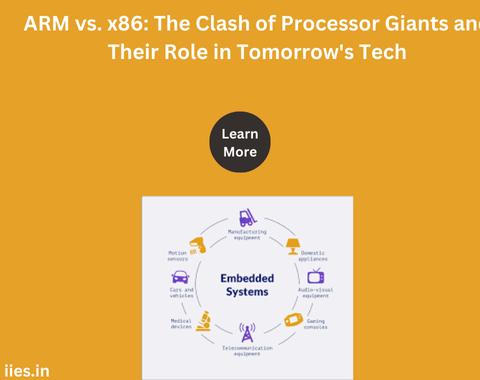
Embedded systems are specialized computing systems that are designed to perform dedicated functions within larger mechanical or electrical systems. Unlike general-purpose computers, embedded systems are highly optimized for specific tasks, making them integral to a wide range of applications such as automotive electronics, medical devices, industrial machines, and consumer electronics. To fully comprehend how embedded systems function, it’s essential to understand their key components, each playing a critical role in ensuring optimal performance. This article delves into the core elements that make up an embedded system.
At the heart of every embedded system lies a microcontroller (MCU) or a microprocessor (MPU), the “brain” responsible for processing data and executing instructions.
Memory is another critical component in embedded systems, serving as the system’s storage for both data and instructions.
An embedded system requires a stable power supply to function correctly. The power supply is typically designed to meet the voltage and current requirements of the microcontroller and other components, ensuring consistent operation. In portable or battery-powered systems, energy-efficient designs are crucial to maximize battery life.
Most embedded systems depend on a precise clock/timing circuit to coordinate actions within the system. A clock source, such as a crystal oscillator, provides timing signals that synchronize data processing, input/output functions, and communication. Without accurate timing, tasks could fail to execute in the correct order, leading to system malfunctions.
An embedded system interacts with the external world through I/O interfaces. These peripherals allow the system to receive inputs from sensors, switches, or user interfaces and send outputs to actuators, displays, or other systems. Common I/O interfaces include GPIO (General-Purpose Input/Output) pins, serial communication interfaces (UART, SPI, I2C), and analog/digital converters (ADC/DAC) for interfacing with analog sensors.
In many embedded systems, communication between components or with external devices is essential. Communication interfaces facilitate the exchange of data within the system or between systems. Popular communication protocols include:
Embedded systems often work closely with sensors and actuators to interact with the physical world.
The firmware or software embedded within the system governs its operation. Written in programming languages like C, C++, or Assembly, the software provides the logic that the system follows to perform its tasks. Real-time operating systems (RTOS) may also be implemented in more complex embedded systems, offering real-time task scheduling, resource management, and interrupt handling.
During the design phase, engineers use debugging and development tools to fine-tune the performance of the embedded system. Common tools include:
The ARM vs. x86 debate reflects more than just a technical rivalry—it highlights the shifting demands of the tech industry. ARM’s strength in power efficiency and flexibility is increasingly crucial as the world moves toward mobile, IoT, and cloud computing. x86, however, will continue to reign in high-performance applications and legacy systems.
Ultimately, both architectures will play a significant role in shaping the future of technology. ARM’s rise signals a new era of computing where power efficiency and scalability are key, while x86’s legacy of performance ensures its place in demanding tasks. As these architectures continue to evolve, the line between them may blur, but the clash of these processor giants will shape the tech world for years to come.
Indian Institute of Embedded Systems – IIES